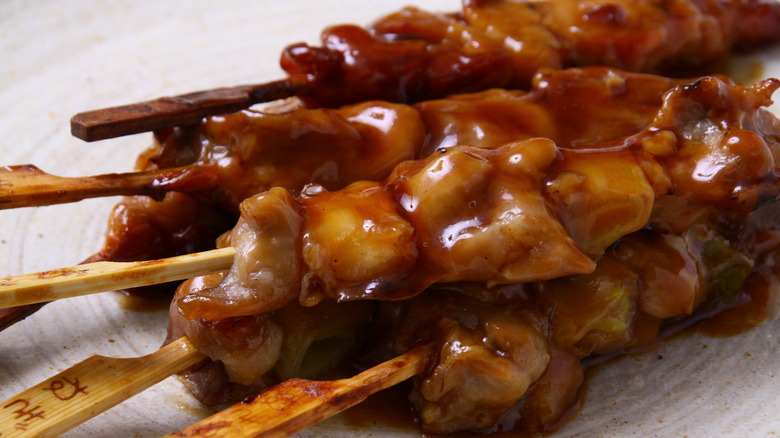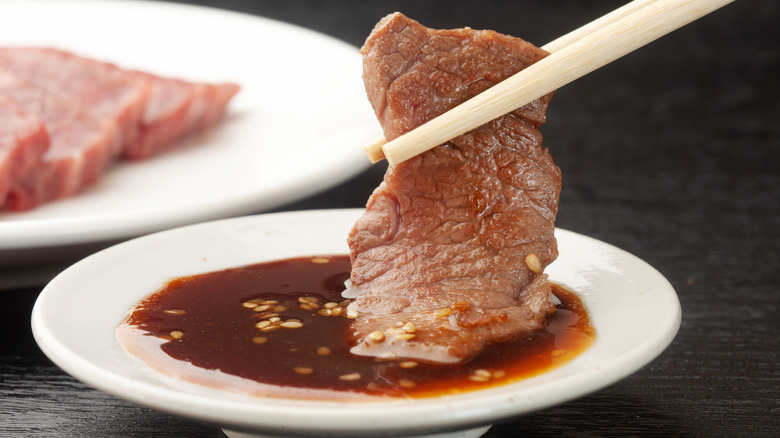Tare: The Japanese Dipping Sauce That's Great For Grilled Meat
In Japan, dipping sauces often serve as marinades for grilled meats and vegetables. Tare is one of these; it's a staple in Japanese cuisine that's versatile enough to use in a wide array of savory foods. Soy sauce may wear the umami crown in Japan, but tare brings an added sweetness to the table. Without it, many of the country's iconic dishes wouldn't be nearly as complex — or delicious. In particular, tare is responsible for the sticky shimmer on yakitori skewers and for the depth of flavor in all the best comforting ramen recipes.
In Japan, tare, meaning "dipping sauce" or "glaze," is a general term used to refer to numerous sauces, and its origin dates back to 14th-century academic cookbooks. Many chefs have their own unique tare recipes, but the most common version combines a soy sauce base with mirin (a Japanese rice wine), sake, and brown sugar. These ingredients are then slowly simmered until they reach a thick consistency, at which point additional ingredients may be added.
Tare is most often associated with Japanese-style barbecue and almost always accompanies a stack of grilled meat or veggies. Teriyaki, an extrapolation of the word "tare," is one such sauce that Western barbecue lovers are likely familiar with.
Yakiniku is the primary tare sauce used for grilling
Yakiniku, a variety of tare sauce, is specifically meant for grilling Japanese barbecue (though you can certainly use it in recipes for your next BBQ cookout). The term combines the Japanese words for "grilled" and "meat." Yakiniku contains all the same ingredients as an average tare sauce but adds sesame oil and roasted sesame seeds. In Japan, it's usually used for barbecued Wagyu beef but can be paired with other grilled meats like lamb or chicken. At yakiniku restaurants, meat is thinly sliced into bite-sized pieces, which customers grill to their liking. Sweeter sauces generally pair well with fatty cuts of meat, while salty ones are ideal for flavoring innards like beef heart or liver. Typically, the meat is grilled before being dipped in the sauce.
Ponzu is another kind of tare sauce, as are creamy sesame goma, miso tare, and molasses-like kuromitsu. A chef can easily tweak their tare sauce to complement whatever meats or vegetables are sizzling on the grill — after the sauce thickens, some may prefer to add a dash of miso, minced garlic, or bonito flakes to further bolster its umami effect. Spices can also add a slight heat kick. Tare sauce balances sweet and savory flavors, creating a perfect combo that can turn a basic barbecue recipe into something truly special.

